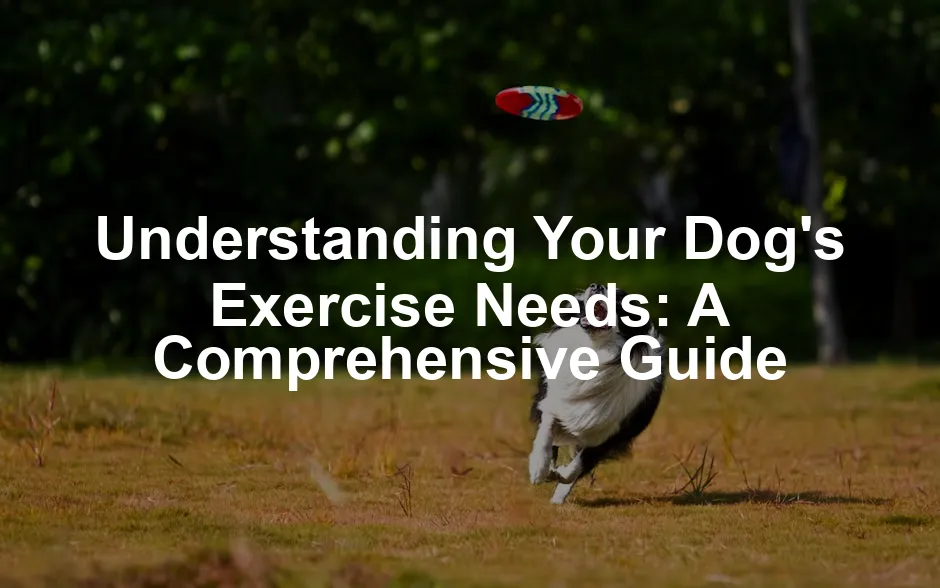Introduction
Exercise is vital for your dog’s health. It keeps them fit, happy, and mentally stimulated. Just like humans, dogs require regular physical activity. However, not all dogs need the same amount of exercise. Factors such as breed, age, and health play a significant role in determining their needs.
This article aims to guide you in understanding and meeting your dog’s unique exercise requirements. Whether you have a playful puppy or a serene senior, we’ve got you covered!
Summary and Overview
Regular exercise offers numerous benefits for dogs. Physically, it helps prevent obesity and keeps their muscles strong. Mentally, exercise can alleviate boredom and reduce anxiety. Emotionally, it strengthens the bond between you and your furry friend.
Each dog’s exercise needs vary based on several factors. For instance, a high-energy breed like a Border Collie will require more activity than a low-energy breed like a Bulldog. Puppies generally need short bursts of play, while senior dogs may prefer gentle walks.
Throughout this article, we will provide tailored recommendations for puppies, adult dogs, and senior dogs. You’ll gain insights into how to help your dog stay fit and happy!
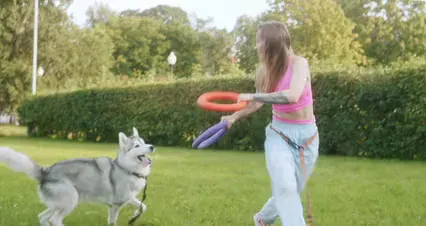
Factors Influencing Dog Exercise Needs
Breed Considerations
Different breeds come with varying energy levels and exercise requirements. Some dogs thrive on vigorous activity, while others are content with a leisurely stroll.
For example, high-energy breeds like Australian Shepherds and Labrador Retrievers require at least one to two hours of exercise daily. These dogs often enjoy running, playing fetch, or engaging in dog sports. On the other hand, low-energy breeds like Bulldogs and Basset Hounds may only need 20 to 30 minutes of moderate exercise.
Research indicates that many dogs do not meet recommended exercise levels, which can lead to health issues. For instance, a study found that over half of surveyed dogs did not get the recommended daily activity, impacting their well-being.
If you’re looking to keep your active dog safe during those wild runs, consider investing in a Dog Leash with Reflective Stitching. This way, you can walk your dog during those twilight hours and still keep them visible to others. It’s safety first for our furry pals!
Understanding your dog’s breed and its specific exercise needs is key to ensuring they remain healthy and happy.
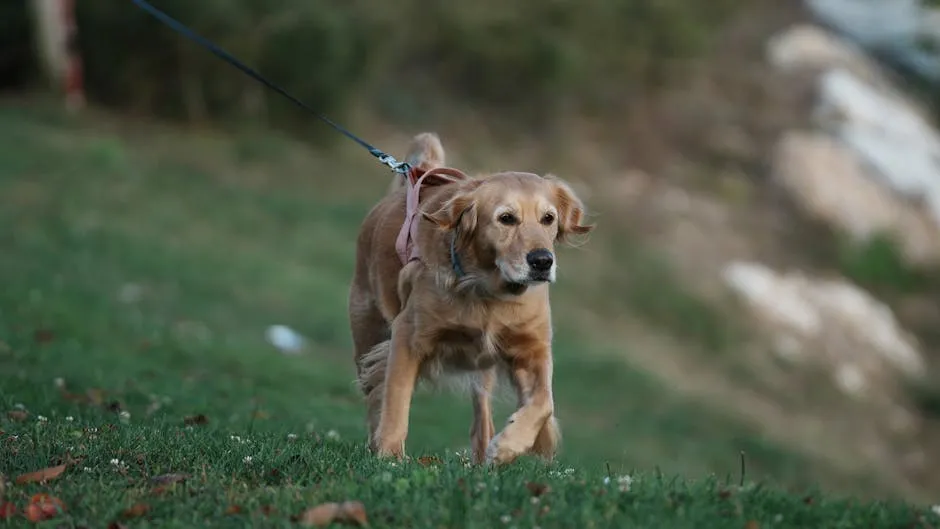
Age and Exercise Requirements
Every dog’s exercise needs change as they age. Puppies, adults, and seniors all require different levels of activity. Understanding these requirements helps keep your furry friend healthy and happy.
Puppies are full of energy but need careful exercise. Too much can harm their developing joints. A good rule of thumb is 5 minutes of exercise per month of age, up to twice a day. For instance, a 5-month-old puppy needs about 25 minutes of activity, like short walks or play sessions. This helps them socialize and learn basic commands.
Adult dogs generally need more exercise than puppies. Depending on their breed, they may require 45 minutes to two hours of activity daily. High-energy breeds, like Border Collies, may need over an hour of vigorous exercise, while low-energy breeds, such as Bulldogs, may only require 30 minutes of light play. Regular walks, playtime, and dog sports keep them fit.
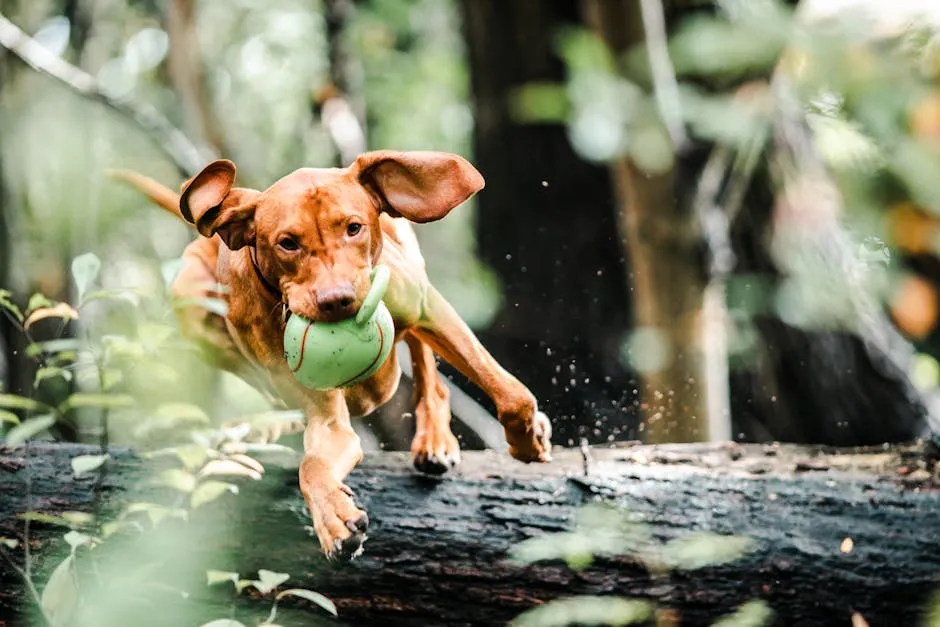
For those hot summer days, consider a Dog Cooling Mat to keep your furry friend comfortable while they relax after play. After all, even the most energetic pups need their chill time!
Senior dogs often slow down and may have health issues. Their exercise routine should be gentler. Shorter walks of 20-30 minutes, broken into multiple sessions, work well. Swimming is a great low-impact option. Always watch for signs of fatigue, like heavy panting or reluctance to continue.
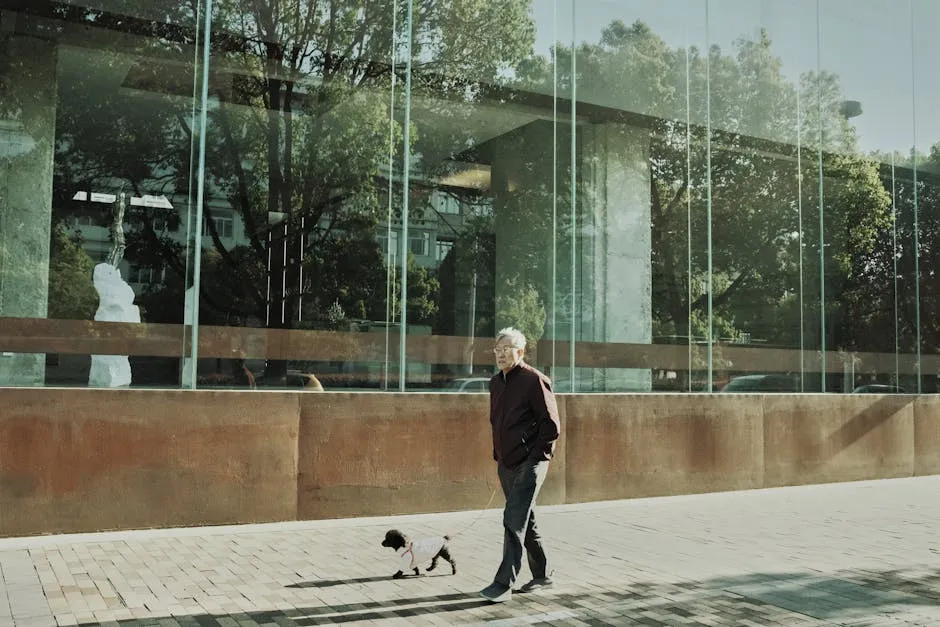
Health and Fitness Levels
A dog’s overall health greatly influences its exercise needs. Underlying issues, such as arthritis or heart conditions, can limit their ability to be active. It’s essential to consider these factors when planning their exercise routine.
For dogs with health concerns, consult your veterinarian. They can create a personalized exercise plan that meets your dog’s specific needs. For instance, a dog with arthritis might benefit from low-impact activities like swimming or gentle walks. This keeps them active without causing strain.
Furthermore, regular check-ups can help assess your dog’s fitness levels. Maintaining a healthy weight and fitness routine can reduce the risk of chronic health conditions. By addressing your dog’s health considerations, you ensure they enjoy a long and active life.
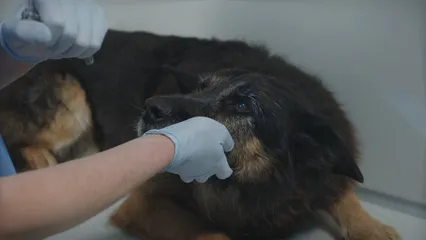
Daily Exercise Recommendations
General Guidelines
Daily exercise is crucial for every dog, but the amount varies based on size, breed, and age. Here’s a general framework to guide you.
Small breeds like Chihuahuas typically need 20-30 minutes of exercise daily. They enjoy brisk walks and playtime in the yard.
Medium breeds, such as Beagles, usually require around 30-60 minutes. Activities like fetch or agility training work well for them.
Large breeds, such as Labradors, often need 60-90 minutes. This can include long walks, runs, or swimming, which helps burn off excess energy.
Always tailor exercise routines to your dog’s specific needs. Remember to watch for signs of fatigue or overexertion, and adjust accordingly. Regular exercise not only maintains their physical health but also promotes mental well-being, making for a happier, healthier dog.
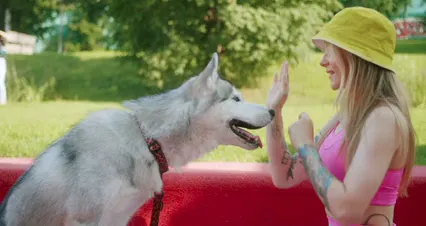
Exercise Types and Activities
Outdoor Activities
Outdoor activities are fantastic for keeping dogs fit and happy. They provide both physical exercise and mental stimulation. Let’s look at some great options tailored for different breeds.
Hiking is perfect for adventurous dogs. Breeds like Huskies and Labrador Retrievers thrive on trails. They enjoy exploring nature while getting a solid workout. Always ensure the trail is suitable for your dog’s fitness level.
Swimming is another excellent choice. It’s low-impact and great for dogs with joint issues. Breeds like Retrievers and Poodles often love water. Swimming can be a refreshing way to exercise on hot days.
Fetch is a classic game that many dogs adore. Whether in your backyard or a local park, it’s a simple way to engage your dog. Active breeds, like Border Collies and German Shepherds, will happily chase after a ball.
If your dog enjoys a little extra challenge, consider an Dog Agility Training Equipment. It’s a fun way to bond while keeping them physically and mentally challenged. Plus, you might have a future champion on your hands!
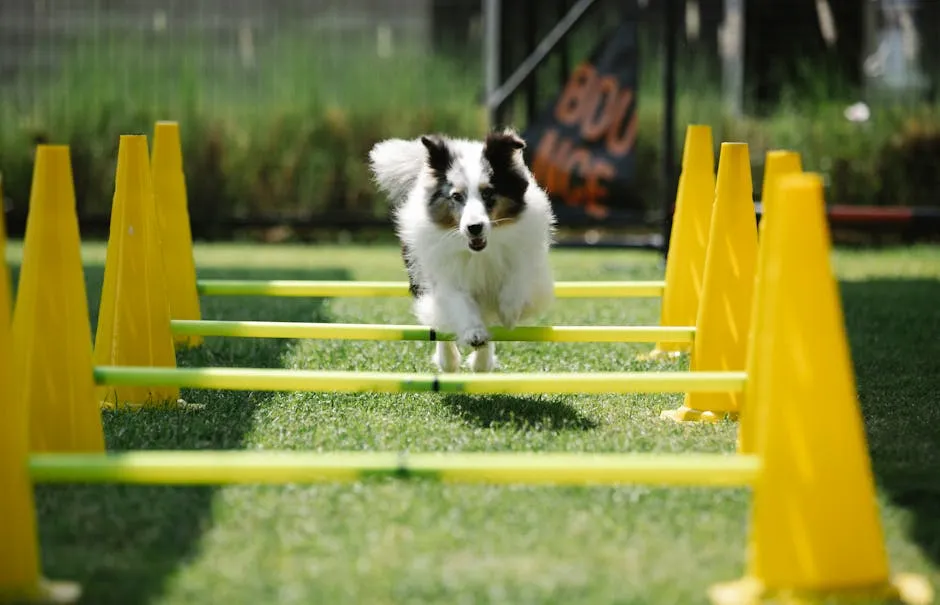
Don’t forget about dog sports! Participating in activities like agility training or flyball can be a fun way to bond with your dog. These sports challenge your dog’s mind and body, making them perfect for high-energy breeds.
Engaging in group activities, such as dog meetups or classes, can also enhance your dog’s social skills while keeping them active. Outdoor exercises not only meet their physical needs but also strengthen your bond with them.
Indoor Activities
When the weather is uncooperative, indoor activities can help keep your dog engaged. Here are some fun ideas to keep your furry friend active inside.
Hide-and-seek is a delightful game that many dogs enjoy. You can hide treats or toys around the house and encourage your dog to find them. This activity provides mental stimulation, keeping their mind sharp.
Indoor fetch is also a great option. Use a soft toy or ball to prevent any damage. Clear an area in your living room or hallway to throw the toy for your dog to retrieve.
Tug-of-war is another interactive game that helps burn off energy. Just be sure to teach your dog to release the toy on command to maintain control during playtime.
Incorporate Interactive Dog Puzzle Toy into your dog’s routine. These toys challenge them to think and problem-solve, which is excellent for mental stimulation. They can keep your dog entertained and engaged for hours.
Remember, mental stimulation is just as important as physical exercise. Combining both indoor and outdoor activities will help ensure your dog remains well-rounded and happy.
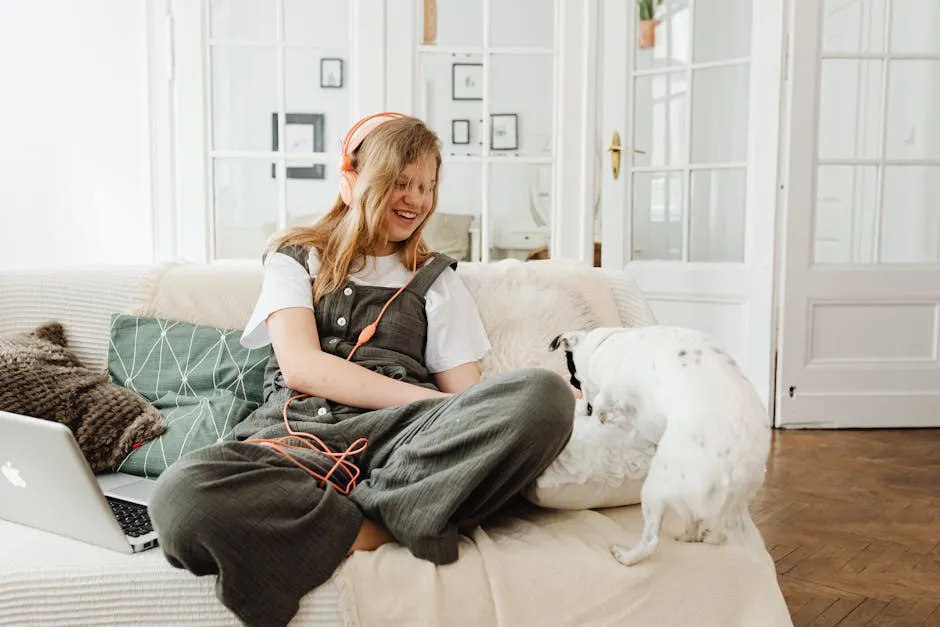
Signs Your Dog Needs More Exercise
Recognizing when your dog needs more exercise is crucial for their well-being. Certain behavioral signs can indicate that your pup is not getting enough activity.
Destructive behavior is a common sign. If your dog starts chewing furniture or raiding the trash, they may be bored or restless. Increasing their exercise can help alleviate these behaviors.
Hyperactivity during playtime can also indicate a lack of sufficient exercise. If your dog seems overly excited or has difficulty settling down, it may be time to amp up their activity levels.
Another sign is excessive barking or whining. Dogs often vocalize when they feel anxious or have pent-up energy. Regular exercise can help reduce these behaviors and promote a calmer demeanor.
Watch for physical signs, too. If your dog seems to gain weight or struggles with basic movements, this may indicate they need more exercise. Regular walks and play can help combat weight gain and improve overall health.
To help with shedding and keep your home fur-free, consider a Pet Hair Remover Roller. It’s a simple tool that can help manage that furry mess.
Assess your dog’s behavior regularly. Keeping an eye on their activity levels will help you adjust their exercise routine as needed. A happy, well-exercised dog is a joy to be around!
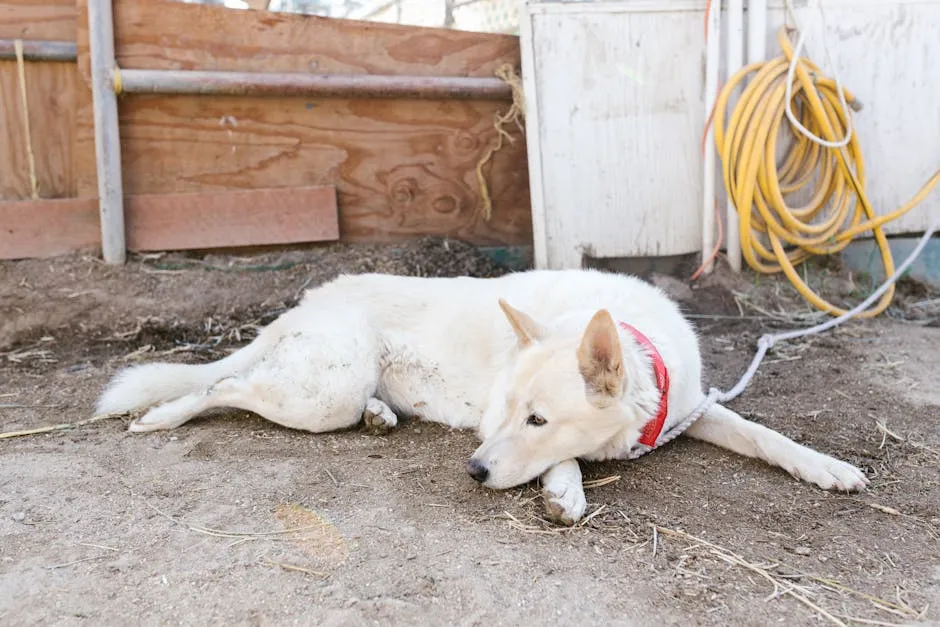
Signs of Overexertion in Dogs
When your dog exercises too much, it can lead to serious issues. Be vigilant for signs of overexertion. Common indicators include excessive panting, drooling, and reluctance to continue activities. Your dog may try to lie down or stop during walks. If your pup shows signs of stiffness or limping afterward, it’s a clear signal that they’ve had enough.
Adjusting your exercise routine is crucial. Start by reducing the intensity or duration of activities. Instead of one long session, consider breaking it into shorter, more manageable segments. Always offer water breaks to keep your dog hydrated. Monitor their behavior closely after exercise. If they seem fatigued or overly tired, scale back the exercise in future sessions. It’s about finding that sweet spot for a healthy exercise routine.
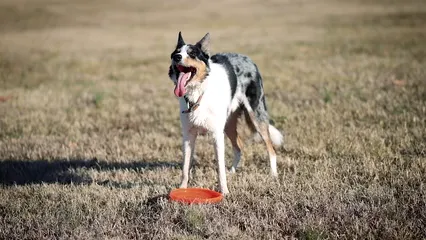
Special Considerations for Different Life Stages
Puppy Exercise Guidelines
Puppies are bundles of energy, but their exercise needs must be approached carefully. Gradual exercise helps prevent injuries to their developing joints. A guideline to follow is about five minutes of exercise per month of age, twice daily. For example, a 4-month-old puppy should engage in about 20 minutes of activity per session.
Interactive play is great for socialization and training. Short walks, gentle fetch, or fun games like tug-of-war work well. Keep sessions varied and positive, as this encourages a love for physical activity. Always watch for signs of fatigue—if your puppy seems tired or disinterested, it’s time to wrap things up.
And don’t forget about a Dog Training Clicker. This handy tool can make training sessions more effective and fun for both you and your puppy!

Adult Dog Exercise Needs
Adult dogs require regular exercise to maintain their health. Most need between 45 minutes to two hours daily, depending on breed and energy levels. High-energy breeds, such as Border Collies, may need more than an hour of vigorous activity. Consider activities like running, fetch, or agility training to keep them engaged.
For lower-energy breeds, 30 to 60 minutes of moderate exercise is usually sufficient. This might include leisurely walks or gentle play sessions. Ensure to mix up their routine to prevent boredom. Regular exercise not only keeps them fit, but it also strengthens your bond through shared activities. Always adjust their routine based on their behavior and energy levels, keeping an eye on their overall well-being.
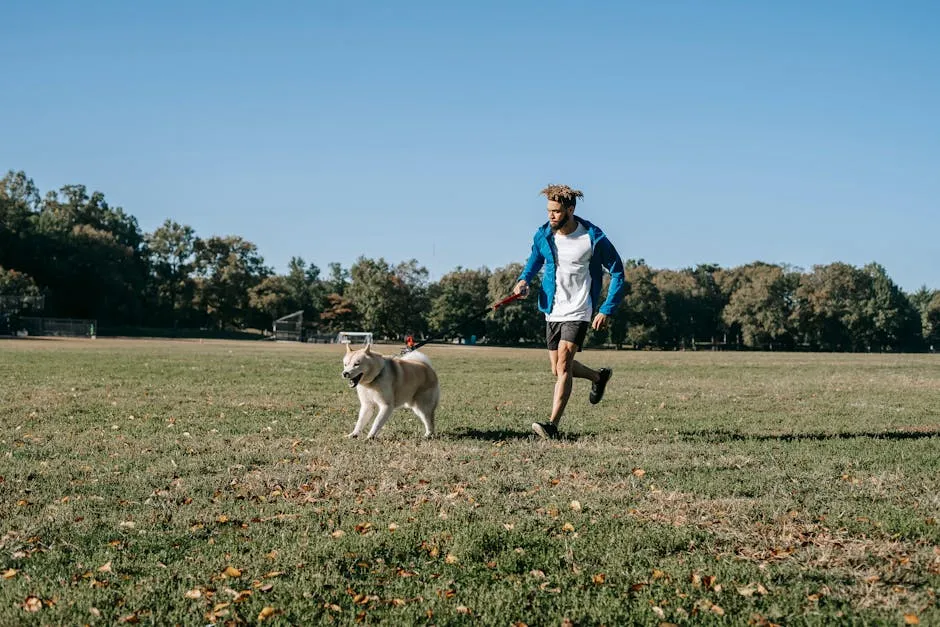
Senior Dog Exercise Tips
As our furry friends age, their exercise needs change. Senior dogs often face health issues that require adjusted activity levels. It’s essential to keep them active while being mindful of their limitations.
Start with gentle walks. Aim for shorter distances of about 20-30 minutes, divided into multiple sessions. This approach reduces strain on their joints and helps maintain mobility. Always watch for signs of fatigue, like excessive panting or lagging behind.
Swimming is another excellent option for senior dogs. It’s low-impact and can help ease joint pain. Many older dogs enjoy the water, making it a fun way to exercise without overexerting.
Consider engaging them in interactive play. Simple games like gentle fetch or hide-and-seek can provide mental stimulation without demanding too much physical effort. Puzzle toys are also great for keeping their minds sharp.
Always consult your veterinarian if you’re unsure about your dog’s specific needs. This ensures you tailor their exercise plan appropriately. Keeping our senior pets active contributes to their overall health and happiness.
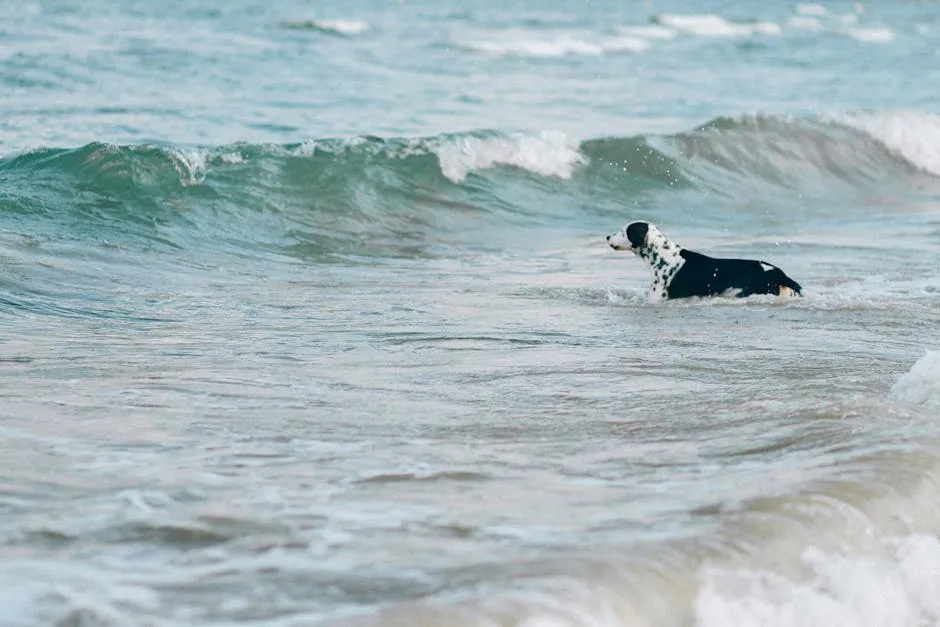
FAQs
How much exercise does my puppy need?
Puppies require about 5 minutes of exercise per month of age, up to twice daily.
What are the signs my dog needs more exercise?
Look for destructive behavior, hyperactivity, or excessive vocalization.
Can I exercise my dog in hot weather?
Yes, but exercise during cooler hours and provide plenty of water.
How do I know if my senior dog is getting enough activity?
Monitor signs of fatigue and adjust activity levels accordingly.
What types of exercise are best for large breed dogs?
Activities like swimming, hiking, and controlled fetch are beneficial.
Is it okay for my dog to run off-leash?
Off-leash play is fine in safe areas, but ensure your dog has good recall.
What should I do if my dog refuses to exercise?
Try different activities or consult a professional for tips on encouraging movement.
If your dog is showing signs of excessive barking, it may be beneficial to learn more about understanding and managing excessive barking in dogs.
And for those unexpected moments, having a Pet First Aid Kit on hand can give you peace of mind during your adventures together.
Please let us know what you think about our content by leaving a comment down below!
Thank you for reading till here 🙂
All images from Pexels

